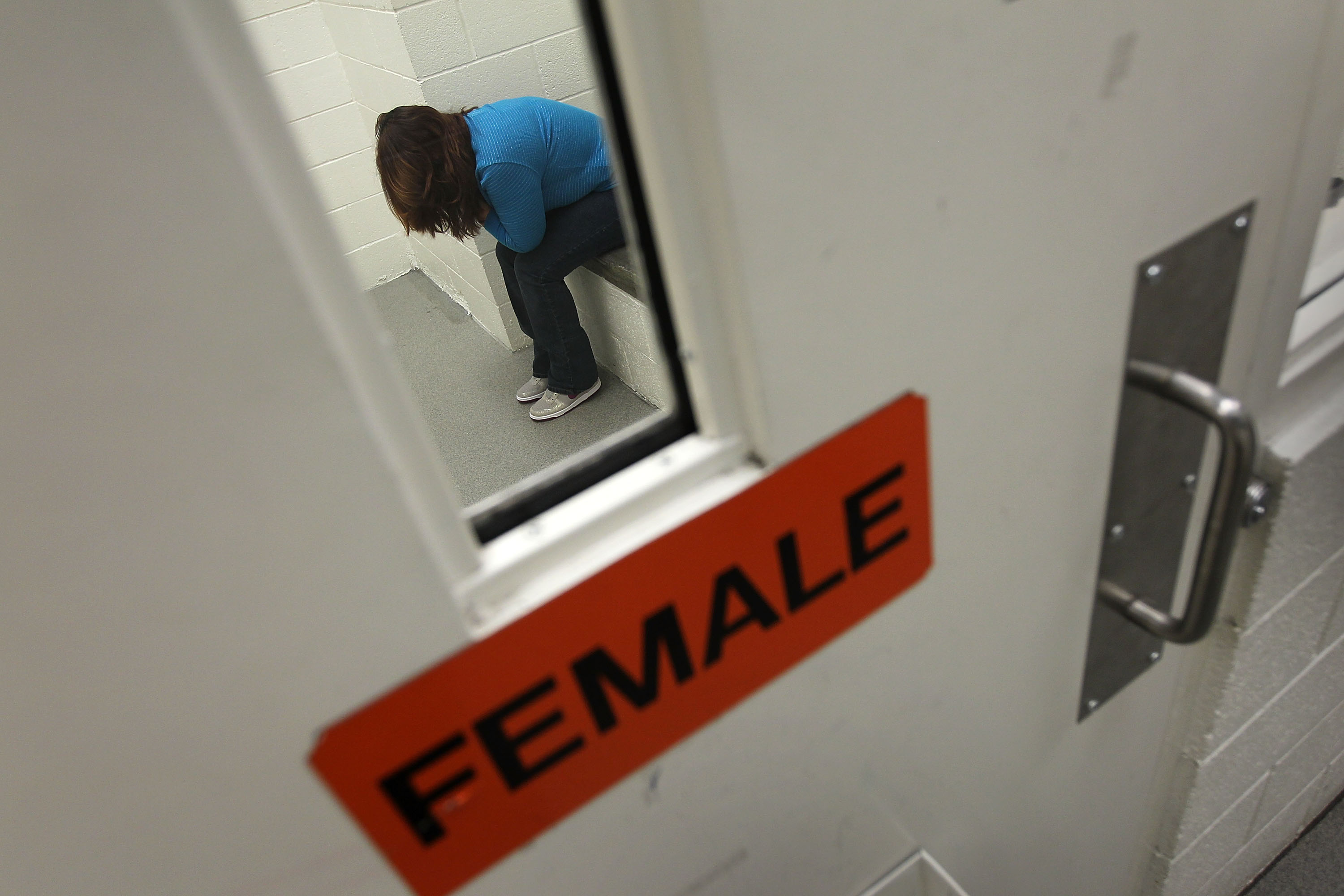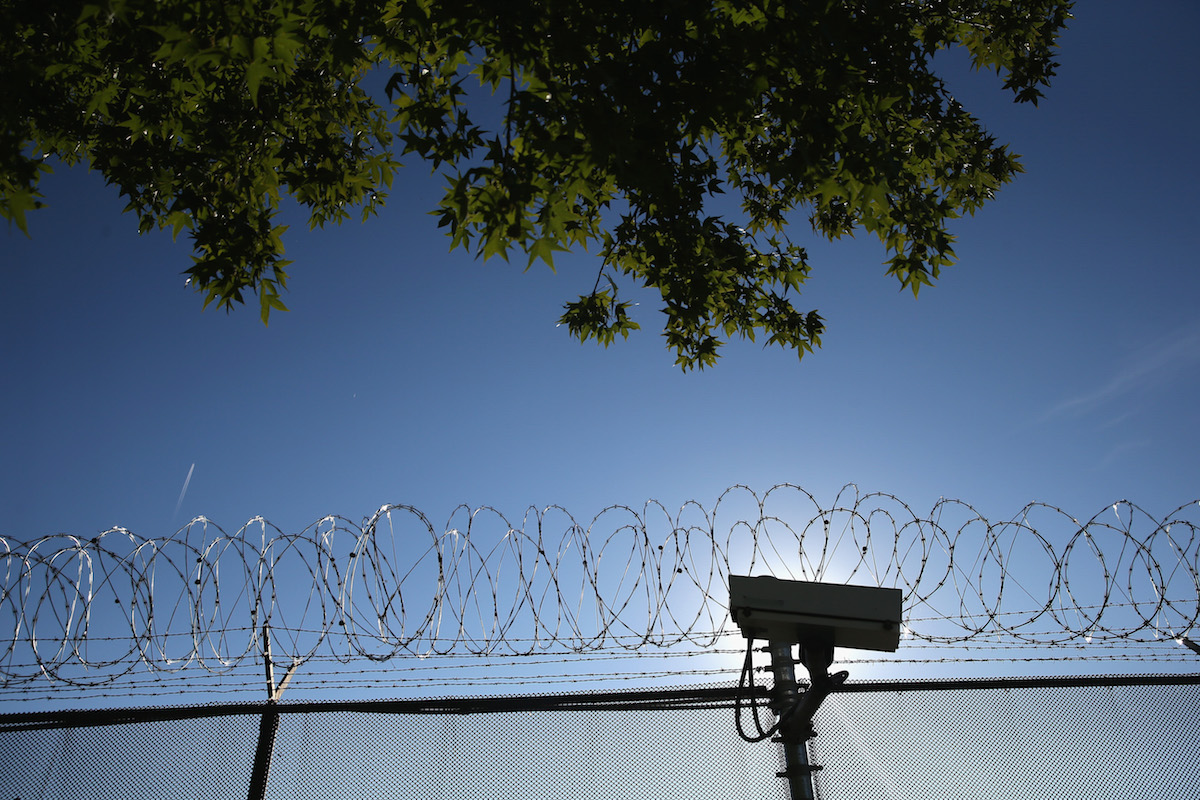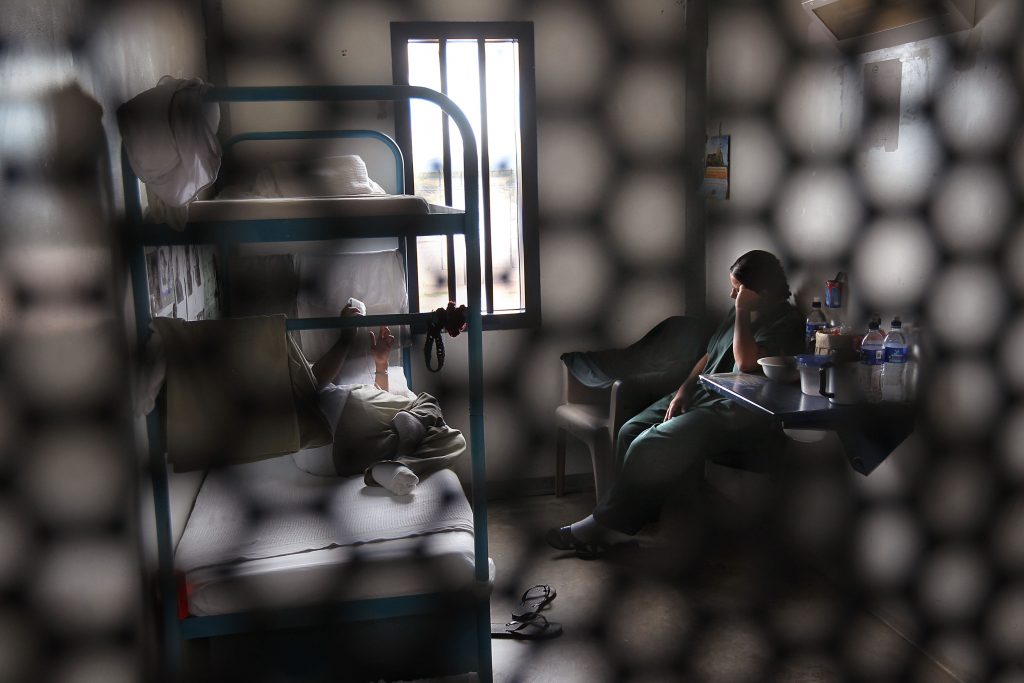Moving to the United States was supposed to make her feel safer. But when she made the choice to immigrate, she didn’t know the same horrors she sought to escape would await her inside immigrant detention centers.
Editor’s note: This piece contains depictions of sexual abuse and violence.
Growing up in Mexico, transgender activist Gretta Sota Moreno endured physical abuse – both at school and at home – because of her gender identity. At age 7, she recognized that she felt drawn to girl’s clothing. But as society tried to suppress her in the form of taunts and assault, she hid this part of herself.
One day, a then-20-something Gretta said a cop saw residual eyeliner on her lids and attacked her. As she continued to be harassed and mistreated, she began considering making the journey north. At age 30, she left Mexico City to seek a better life in the US, crossing over the deadly Arizona desert in 2003, according to Vice.
By 2006, she started transitioning and taking hormones. Five years later, officers arrested her and transferred her into the custody of Immigration and Customs Enforcement (ICE). She spent about three months at Eloy Detention Center before being released on bond. But a few months later, officers arrested her again and once again handed her over the immigration agents, who placed her at Eloy alongside men for a second time. There, she endured abuse from other inmates and immigration officials.
“From the first day I was in prison, an official called me fa**ot, and there the war was constant as immigration saw me as a threat because I was somewhat of a leader in the transgender community,” Moreno tells me.
“With my own blood I wrote on the wall, ‘No more mistreatment of transgender women in prisons.’”
She alleges that male guards squeezed her breasts and butt. The physical contact was not only unwanted, but as a transgender woman on hormones, it was also painful. For the nearly two years she spent at Eloy, she knew physical abuse could occur at any give moment.
One day in June 2015, as Gretta looked forward to a visit from a local immigration support group, another detainee threatened her – something she believes a facility guard she accused of abuse helped facilitate. The endless sexual harassment and a system that didn’t protect her drove her to take drastic action. Taking the razor she hid in her cell to shave, she began to self-mutilate.
“I remember cutting myself and blood flowing down my legs,” she says. “The toilet all red and with my own blood I wrote on the wall, ‘No more mistreatment of transgender women in prisons.’”
Immigrants say life inside a detention center is dehumanizing. Between minimal health care and the lack of rights, these often for-profit organizations do not treat immigrants with dignity. While there are plenty of reports on the subpar conditions of these immigrant jails, there are many injustices that go unresolved, documented or otherwise. Gretta’s tragic story is just one example of the lengths undocumented immigrants have gone to after being subjected to abusive behavior.

On January 12, Laura Monterrosa – an immigrant from El Salvador detained at the T. Don Hutto Residential Center – attempted to take her own life. Detained in May 2017, Laura reports that a guard began to sexually abuse her in June.
Following the rise of #MeToo – a hashtag victims of predatory behaviors have used to talk about their experiences – Monterrosa courageously came forward with her story. But days after she shed light on the harassment, ICE said her claims were “unsubstantiated.” Not only was her story dismissed, but she also had to continue seeing her abuser. With no one putting an end to this, Laura took 51 pain pills, attempting to commit suicide.
After returning from the hospital, officials placed her in solitary confinement for 60 hours – an ICE order many believe is retaliatory. There’s also reports that the detention center used isolation as a way to get her to recant her story. In the weeks since her story went viral and put a bigger spotlight on the many ways immigration detention centers treat detainees as dispensable, she remains suicidal. Laura has not received the mental and physical attention she desperately needs.
People on the outside are fighting for her as she struggles on the inside. Grassroots Leadership provides crucial information about her case, and activists have come together to demand her prompt release.

This violent cycle has repeated itself in other circumstances. Take the story of Rosanna Santos, for example. Decades after arriving from the Dominican Republic, she ended up detained at York County Jail in Pennsylvania. Nine months into her 14-month stay, a corrections officer sexually harassed her. The office led Santos and another detained woman to a waiting area before the start of an immigration hearing. He led the women to attorney-client meeting rooms and announced they were under his control. He said if they didn’t succumb, he’d sexually assault them.
After telling her lawyer about the incident, she landed in solitary confinement for 11 days. The officer in question continued working on the women’s wing of the prison. And when Santos – a prior victim of domestic violence – sought psychological counseling, her request was denied.
“I’m going to do whatever I can so that others don’t go through what I did.”
According to a formal complaint that Community Initiatives for Visiting Immigrants in Confinement (CIVIC) filed on the behalf of Santos and other immigrants across the country, the incident caused Santos to “suffer intense anxiety, depression, and nightmares.”
The abuse women face is not often spoken about, and neither is what men go through. In September 2013, a man raped immigrant Douglas Menjivar Pineda at the Joe Corley Detention Facility in Texas in front of other people. He was threatened with death if he talked. However, he reported it to the supervising facility official who accused him of being stupid for “allowing” it to happen. Pineda also didn’t receive medical or psychological care. And despite completing two interviews, officials found no supporting evidence.
Pineda tells me he was released without a reason, but he has yet to be granted access to his medical files, which could absolve him. He suffers from post-traumatic stress and nightmares. “I accidentally hit my wife while having a nightmare,” he tells me. “Fortunately, it wasn’t severe.”
On April 11, 2017, CIVIC reported 27 sexual abuse-related complaints in immigration detention over the course of three years. Most of those affected couldn’t file formal grievances or complaints for fear of retaliation. Additionally, 1,016 people under the custody of the Department of Homeland Security have submitted sexual abuse-related complaints to the Office of the Inspector General since 2010. Per data CIVIC received from ICE, immigrants at 76 detention facilities have reported sexual assault.
Both Gretta and Rosanna are now free. After inflicting pain on herself, officials moved Gretta to a Santa Ana facility with other transgender inmates. There, she endured invasive cavity searches performed by male guards. She became free in March 2016 after living at the Santa Ana center for eight months.
As for Santos, her attorney helped her get released a month after the guard threatened her with anal sex. She received relief from deportation, but four years later, it’s not enough to shake off what happened within the walls of York County Prison. This has pushed her to become an activist on behalf of other immigrants undergoing similar experiences. She’s fighting for the implementation of new immigration policies. Her hope is that the right and dignity of all, especially women vulnerable and subject to abuse, are respected.
“Many of the women who pass through detention centers are bilingual and many of them are scared to talk about the many things that happen inside,” Santos says. “I had [the] opportunity to get out, and I’m going to do whatever I can so that others don’t go through what I did.”







